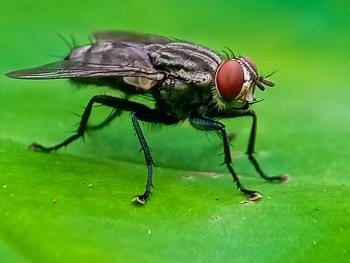
Heartworm: An emerging disease
Heartworm: An emerging disease? It may seem to be an odd title when you consider Dirofilaria immitis was discovered in Italy in 1626, and the first reported case in the United States was in 1847.
Heartworm: An emerging disease? It may seem to be an odd title when you consider Dirofilaria immitis was discovered in Italy in 1626, and the first reported case in the United States was in 1847.
One hundred twenty-seven years later, the American Heartworm Society was formed to further scientific progress in the study of heartworm disease and to promote effective procedures for the diagnosis, treatment and prevention of heartworm disease. Over the past 36 years, tremendous strides have been made in achieving these goals. We now have a better understanding of the disease process and the complex host-parasite relationship. We have discovered the presence of a bacterial endosymbionts, Wolbachia, within heartworms themselves and are learning more about their role in the biology of D. immitis. We have effective treatment for dogs infected with heartworms and we have drugs that are virtually 100 percent effective in preventing heartworms. With so much progress in treatment and with such effective preventives, how can heartworm still be an emerging disease? Before I attempt to answer that question, I want you to look closely at the maps above.
It is pretty obvious with just a cursory glance that heartworms are spreading into areas previously considered non-endemic. The historically high endemic areas are reporting more cases per clinic in the latter part of the past decade than earlier in the decade. So why is a disease that is so preventable continuing to spread? Why has the average number of cases per clinic increased during the last decade? Simple, things change! The world is not the same as it was 30, 20, 10, five, or even one year ago.
For heartworms to become endemic in an area you need three factors in place. First is a reservoir of infection. This is typically microfilaremic dogs or wild canids that are relocated to an area previously devoid of heartworms. It can be the gradual creeping migration of infecting the dog next door to the dog in the next block to the dog in the next town and eventually the dog in the next state. It could be the heartworm positive dog that relocates with its family or the rescued dog from an endemic state transported across the country. It happens every day on our interstate highway systems as it has for the past 50 years. These relocations are not rare events, as only half of our owned dogs receive heartworm preventive.
The second factor is a competent mosquito vector. There are more than 70 species of mosquitoes that have been shown capable of transmitting heartworms, 22 of which are considered significant. Every region of the United States has one or more species from this list in at least pockets if not throughout the area. And just like the reservoir of infection, mosquito species can migrate into areas. In the western United States, irrigation and development of previously arid areas have created habitats supportive of the western knothole mosquito, Aedes sierrensis, a known transmitter of heartworm. This mosquito can now be found throughout Los Angeles County, according to the local mosquito control agency.
Aedes albopictus, the Asian tiger mosquito, was introduced into the southeastern United States in 1987 and has now spread north to Minnesota and west to the Rocky Mountains. This urban-dwelling mosquito is able to reproduce in flowerpots or any other small puddle. It is a voracious feeder and will feed all day long, not just at dusk and dawn. In some areas it has displaced Aedes aegypti as the most common mosquito. Weather patterns can affect mosquito species, too. Droughts obviously decrease mosquito numbers by reducing breeding grounds. Conversely, rain increases mosquito numbers and rising water into flood plains precipitates the hatching out of floodwater mosquitoes whose eggs can lay dormant for two to three years waiting for rising water. Floodwater mosquitoes such as Aedes sticticus travel farther from their hatching grounds and live longer than the average mosquito.
The third and final factor required for the migration of heartworm within an area is favorable climactic conditions. It has been well documented that the development of heartworm larvae ceases at 57°F within a few species of mosquitoes. This has led to the seasonal administration of heartworm preventives in northern states. While heartworm transmission is severely hampered by cool temperatures, micro-environments found in urban areas reduce the likelihood of heartworm transmission ceasing completely. As we continue to develop our suburbs with shopping centers and parking lots, we create "heat islands" that are capable of moderating temperatures thus creating small areas conducive for mosquito survival. There are species of mosquitoes that overwinter as adults and others that while larval development ceases in cool temperatures, it resumes promptly following warming.
While it may only take a small change in any of the three factors we discussed to allow heartworms to become established in area, the fact of the matter is that all of these issues are dynamic. Microfilaremic dogs continue to be transported across the country, mosquito populations are in a constant state of flux based on weather patterns and real estate developments, and the same real estate developments are capable of producing micro-environments that can support mosquitoes during cooler months. These facts won't change. Heartworms will continue to spread and be an emerging disease in areas previously considered not to be endemic, but it doesn't have to be that way.
So, how can heartworms still be an emerging disease? The answer is sobering. As a profession we fail to put enough dogs on heartworm prevention; we fail to educate our clients of the risk; and we fail to realize the world is changing around us.
I have heard colleagues from non-endemic heartworm areas state that they will start prescribing heartworm prevention when they start seeing local dogs infected with heartworm. Why wait? Having grown up on the Gulf Coast, there is a phrase that is apropos, "When you are up to you're a@# in alligators, it is difficult to remember that your initial objective was to drain the swamp."
Dr. Nelson practices at the Animal Medical Center in Anniston, Ala. He is past president of the American Heartworm Society and serves on the board of the Companion Animal Parasite Council.
Newsletter
From exam room tips to practice management insights, get trusted veterinary news delivered straight to your inbox—subscribe to dvm360.




